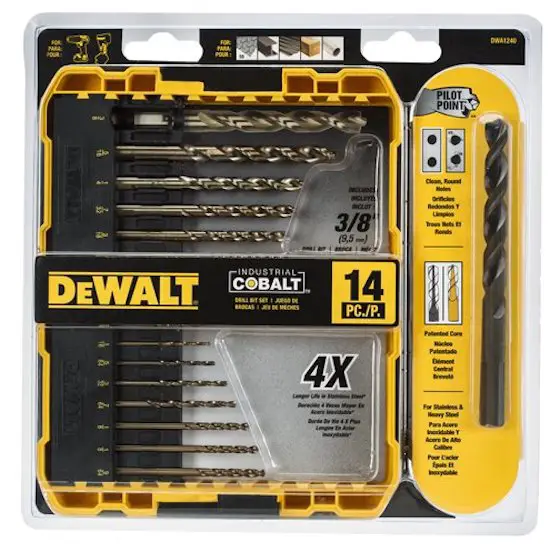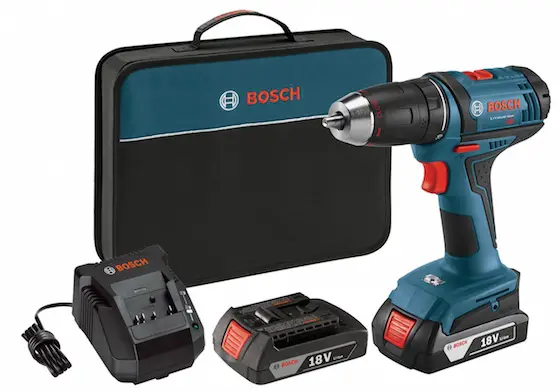How to Drill Into Steel Like a Pro
How to Drill Into Steel TIPS
- Drill slow with moderate pressure
- WATCH my Video Below!
- Use a proper COBALT metal bit CLICK HERE to BUY NOW
- Apply clean motor oil to steel to keep bit cool
- CLICK HERE to get Tim's FREE & FUNNY newsletter!
My guess is this summer you’ll be faced with some DIY project where you need to drill into metal. Steel is the most common metal you’ll find around your home and it’s not as hard to drill through as you might think.
Rookie DIYers will usually make a few mistakes that can cause damage to the metal, tools or surrounding finishes, cause frustration, and create a string of bad language that might cause a sailor to blush. You can avoid all of this by just following a few simple steps!
The key is to use the correct bit, drill slow and keep the drill bit COOL. You keep it cool by drilling in a puddle of clean motor oil if you're drilling a horizontal piece of steel. If the steel is vertical, you'll need a helper and an oil can to squirt oil at the base of the drill bit as you operate the drill.
CLICK HERE to get FREE & FAST BIDS from local handymen in your town to drill your piece of steel.
WATCH THIS VIDEO FIRST:
Degree of Difficulty: 
Step One: Gather a power drill that has adjustable speeds. A scrap piece of wood to place under the piece of metal being drilled will be very handy. You’ll also need sharp cobalt drill bits (CLICK HERE to ORDER some now) made to drill into metal. These bits are clearly marked for that purpose on the label and frequently contain cobalt in the steel used to make the bit.

Look at the label of any bits you buy. I've used these COBALT bits and they're fantastic. CLICK THE IMAGE to ORDER THEM NOW.
You’ll need a sharp nail or center punch tool. Metal cutting oil or standard motor oil will also be required. A clamp or two to hold the metal in place while drilling may be necessary. If drilling thin metal, heavy work gloves could prevent a nasty slice or cut. Wear safety glasses and heavy gloves when drilling steel. If a sharp shard of metal gets in your eye, the trip to the ER will cost you huge money. Take the time to WEAR SAFETY GLASSES.
Step Two: If the piece of metal you intend to drill is thin and lightweight, you may want to clamp it securely to the piece of wood. The drilling action can cause the metal to spin rapidly as the drill penetrates the metal. This can happen without warning and cause a nasty cut if you’re not careful.
Step Three: If you’re drilling a large diameter hole, say 3/8-inch or larger, you’ll want to drill smaller pilot holes first in the metal. Start with a 1/8-inch hole and then next use a 1/4-inch bit to enlarge the hole. Finish the hole with a 3/8-inch bit.
CLICK HERE to get FREE & FAST BIDS from local handymen in your town to drill your piece of steel.
Step Four: Drilling into metal, especially metal over 1/4-inch thick, can create lots of heat and friction. Heat can and will damage drill bits. Professionals use oil when drilling steel. The oil lubricates the metal and drill bit as it spins. The oil also acts as a heat sink absorbing much of the heat. Simply squirt oil on the metal before you start to drill and add more oil as you drill.
Use clean motor oil. 10w30 is just fine. It doesn't have to be expensive synthetic oil. The viscosity of the oil helps it to suck up lots of the heat from the steel and drill bit. When drilling vertical steel, you'll probably need a helper using an oil can to squirt the oil on the steel at the base of the bit. Collect the dripping oil with a container or paper towels.
Step Five: When you’ve determined where you want your hole, try to create a small depression in the metal with your nail or a center punch tool. This tiny depression helps center the drill bit so it doesn’t wander as you turn on the drill.
Step Six: When you start to drill, use a low speed and moderate downward pressure on the drill. High speeds cause too much friction and high heat levels. Slow and steady drilling speed is best when drilling metal.
Step Seven: If you notice any smoke, you’re drilling too fast or not using enough oil to lubricate the drilling process. STOP and allow the drill bit to cool. You can squirt some oil on the bit to cool it faster. Then begin to add more oil at the point where the bit is cutting into the steel.
Step Eight: When the drill bit is about to break through the other side of the metal, it can grab onto the metal causing the drill to twist in your hand or cause the metal to spin. Be very aware of this as you are about to break through the metal with the bit. Grasp the drill tightly and pay attention.
Summary: It’s not hard at all to drill through metal. Aluminum is very soft and will drill easily. One-quarter-inch steel plate is a challenge, but you can do it. Try to practice first on smaller pieces of metal. It’s vital you have a variable-speed drill and very sharp drill bits. Let me know how you do! P.S. Here's a FANTASTIC DRILL I own that I use to drill steel.

Here's an 18-volt cordless drill I own that does a fantastic job at drilling steel. CLICK THE IMAGE TO BUY IT NOW.
CLICK HERE to get FREE & FAST BIDS from local handymen in your town to drill your piece of steel.
Column: HT018
13 Responses to How to Drill Into Steel Like a Pro